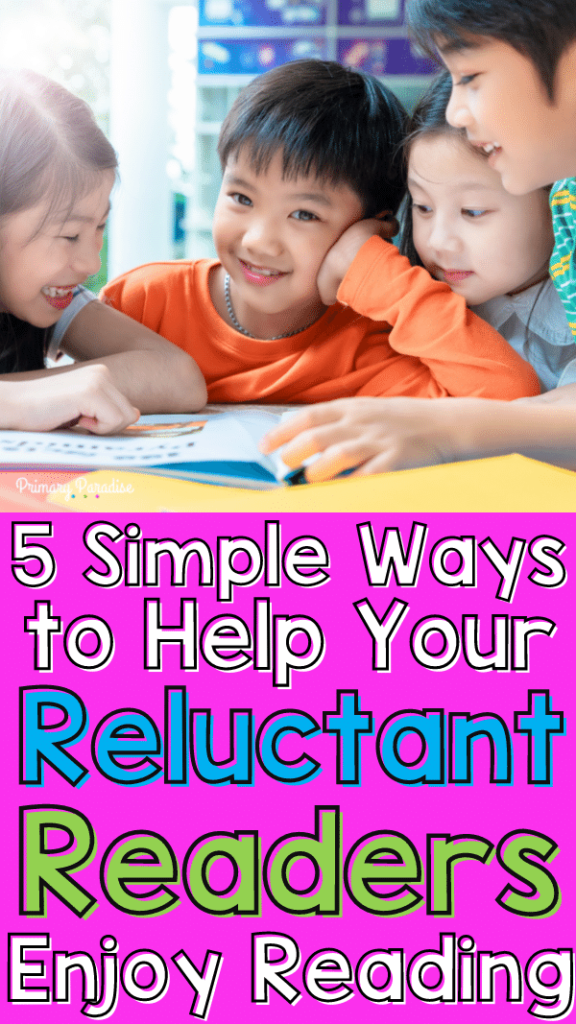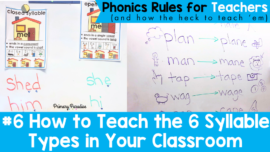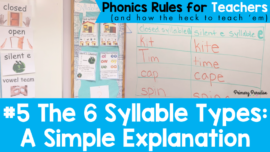Reluctant readers, or simply students who don’t show much interest in reading, need support to help them be successful in school. As students, and then adults, they will need to read to make it in the world. In addition, it’s our job as teachers to help coax our students to read, and hopefully even show them the joys of reading for fun. Here are 5 ways teachers can help encourage reluctant readers to enjoy reading.
Why do some students dislike reading?
Before we get into how we can help our reluctant readers, it’s important to understand why many children don’t enjoy reading. Depending on the age and experience of our students, there could be a lot of reasons.
It’s hard.
Some students are reluctant to read because it’s difficult for them. Maybe they struggle with decoding. Maybe they struggle with comprehension. Whatever the difficulty is, a barrier is created that causes them to not even want to try. In these cases, it’s best to remove those obstacles when we want them to read for pleasure while also providing the intervention support they need to eventually overcome those obstacles. A student who really struggles to decode can’t relax and enjoy the funny, scary, or interesting plot of a story because they’re working so hard to just read the words. Of course, it’s important to work on those foundational reading skills as well. However, we can also help them enjoy books in other ways while they do.
They haven’t found their genre/series.
Some students don’t have any issues decoding or comprehending what they’re reading, but they just haven’t found the genre, series, or type of book that really catches their attention. Maybe they haven’t really tried to look. Maybe they don’t have easy access to books, or maybe their interests are very specific. No matter what the reason is, people don’t generally enjoy reading unless it’s a topic they’re interested in.
They don’t think reading is important.
Some children, for whatever reason, haven’t been taught that reading is important. Again, this could happen for a variety of reasons. They might have parents who are working multiple jobs to provide so reading isn’t a top priority. Or, they might have parents who choose not read for fun. While neither of these are wrong, and of course, we need to be understanding of parents constrains, children copy what they see. Children need to see adults and other people around them value reading if we want them to value reading as well.
The joy of reading has been stolen from them.
Let’s face it. Sometimes school pressures and requirements steals the joy of reading from our children. When every book you read has to be dissected, analyzed, logged, and questioned to death, it kind of takes away the joy of reading. If I knew I had to take a quiz on each book I read, I would probably read way less books. As educators, we need to be cognizant of how we’re using reading in our classroom. Of course, students do need to learn comprehension skills, and they will inevitably have to take reading tests in some form. However, if we don’t give our students the opportunity and time to read just to read, we’re doing a huge disservice to their passion for reading.
5 Ways to Encourage Our Reluctant Readers
So, now we know some of the reasons why we might have reluctant readers in our classroom, let’s talk about what we can do to encourage them to read. Here are some simple things we can do to help spark a passion for reading in our students.
Utilize Audiobooks in Your Classroom
If we have readers who struggle with the process of reading, audiobooks are a fantastic tool to help take the pressure off. Audiobooks are such a wonderful tool because they’re low pressure, entertaining, and can be used so many different ways. You can read all about why audiobooks count as a real book, how to use them in your classroom, and where to find free audiobooks in this blog post. Adding audiobooks to your classroom toolkit is a great way to encourage reluctant readers.
Make Graphic Novels Available to Your Reluctant Readers
Graphic novels are such a great genre of books for reluctant readers because they’re fun, they take the pressure off, and they are just as valuable as any other book. I’ve written in the past about the importance of boosting our students reading confidence, and graphic novels are such a great tool for this. The pictures help support comprehension, break up the text on the page, and just make it more appealing to students. If you’re not sure where to start, here’s a list of graphic novels your first and second grade students will love. If you are committed to helping encourage reluctant readers, graphic novels are such a great resource. An added bonus is that non reluctant readers will enjoy them as well!
Find Books that Interest Your Students
If I was only ever exposed to historical non-fiction books , I’d probably tell you I hated to read. Our ability to enjoy reading stems first from an interest in what we’re reading. Can you remember your favorite book as a child? Can you remember your first chapter book? I know I can. We need to give our students the opportunity to find the same join.
Finding books that interest our students is a huge step in helping reluctant readers love to read. Of course, in order to do this, we have to know our students. So, start the school year by finding out what your students like. Pay attention when they have free time and are chatting with friends. And then, suggest books that relate to their interests.
It’s also helpful to help students to build understanding of what topics and genres interest them. My favorite way to do with this with a hands on reading interest survey. Here’s how it works:
Hands on Reading Interest Survey
- Put out a big basket of books for your kiddos. All types, different levels, just a basket of good books.
- Have them look at the title and cover and sort them based on their initial reaction. Yes= I definitely want to read this. Maybe= I might be interested. Nope= You couldn’t pay me to read this book.
- Then, look at their choices and see what we notice. What topics are they drawn to? Fiction? Non Fiction? A mix?
- Then, have them taking a picture with their picks for future reference for yourself! You can also ask them a few other reading interest questions like if they like to read a book or in a tablet, if they like to read alone or with someone else, etc.
- If time permits, you can have them start looking inside the books and see if any of them switch piles after they see what’s inside.
Helpings students to learn what books interest them gives them tools to find books they love. If you also work to learn what they’re interests are, you can suggest books as well. When students begin to realize that, yes, there are books about Minecraft, zombies, sharks, and unicorns, they will show more and more interest in books.
Normalize Abandoning Books

If picking up a book feels as final as adopting a puppy, than students are going to hesitant to start reading anything that’s even a little outside of their comfort zone. Books are not puppies. It’s okay to abandon them! (The books, not the puppies, of course.) It is vital that we teach our students that it’s okay to abandon a book. As readers, students should have the right to start a book without the pressure of having to finish it. Of course, we want our students to complete books. However, we also want them to understand that it’s okay to get a few pages in, even half way through, and decide you want to read something else. As adults, we abandon books all the time. Children should have the same rights. The knowledge that it’s healthy and normal to decide to stop reading something sometimes will take the pressure off of your reluctant readers.
Let them Star in the Story

A few years ago, I was looking for something that would help my reluctant readers, and I couldn’t find what I was looking for. So, I made it! My Personalized Reading Comprehension passages are such a helpful resource for all readers, but the reluctant reader in your classroom especially. These phonics based comprehension passages are like no other because they star… your students! They’re designed to be short so students don’t feel overwhelmed. Your student gets to read the passage about themselves, answer the 3 comprehension questions, and then draw themselves in the illustration!

I’ve used these with my intervention students in the past, and they are a hit with the most reluctant readers. One of the best parts is that they’re so easy to use. Simply type or class list into the table of contents, and your students’ names autofill in the story. Print them and they’re ready to go!

The bundle includes 253 passages and covers 74 phonics sounds: short vowels, long vowels, digraphs, blends, r controlled vowels, irregular and variant vowels, special endings, and double consonant words. Students will love that the stories are about them, and you’ll love that they’re practicing phonics and comprehension skills at once!
You can find 3 reading passages to try in the resource listing in my shop here.
Keep reading and learning:
- Sight Word Practice that Will Make Students Smile
- Free At Home Reading Parent Support Guide
- 5 Ways to Teach Students to Show Not Tell in Their Writing




